by Sherri L. Burr
 Inspiration can come from numerous sources. I started listening to an audiobook obtained from the library that inspired me to purchase the physical book. Between the two, I devoured the work’s 17 listening hours and 565 pages in three days. Then I felt inspired to write these words.
Inspiration can come from numerous sources. I started listening to an audiobook obtained from the library that inspired me to purchase the physical book. Between the two, I devoured the work’s 17 listening hours and 565 pages in three days. Then I felt inspired to write these words.
Erik Larson’s The Demon of Unrest (New York: Crown, 2024) captures your attention and doesn’t release you until its last words are consumed. The subtitle of the book is “A Saga of Hubris, Heartbreak, and Heroism at the Dawn of Civil War.” We all learned in elementary school that the Civil War commenced after South Carolina fired upon and captured Fort Sumter in 1861. What Larson reveals are tales told in diaries, newspaper clippings, and many additional sources that depict what led to the momentous occasion.
Larson tells the Southern part of the story primarily through lenses that have been buried in archives for over 160 years. Larson begins each part of his work with a quote from The Code Duello to anchor the conflict as one perceived of honor by Southern planters who had been raised or married into “The Chivalry,” or the elite. Larson deftly explains that Southern planters felt they had a right to their high-born lives based on the unpaid labor of millions of enslaved men, women, and children. Many planters perceived a cataclysmic threat to their lifestyles in the November 6, 1860, election of Abraham Lincoln, despite his repeated statements that he did not intend to disturb slavery where it currently existed.
South Carolina was the first to secede on December 20, 1860, followed by six additional states (Mississippi, Florida, Alabama, Georgia, Louisiana, and Texas) before Lincoln was sworn in on March 4, 1861. As The Demon of Unrest unpacks, a series of errors and miscommunications led up to the bombardment and fall of Fort Sumter on April 12-13, 1861. Lincoln’s call for federal troops to suppress the rebellion led to four additional states (Virginia, Arkansas, North Carolina, and Tennessee) to secede by June 8, 1861.
What was disheartening to read in The Demon of Unrest was how President Buchanan and President-Elect Lincoln did not understand that Southern elites mistook the communications from the North as an attack on their honor. Even the initial failure of Major Anderson as the commander of Fort Sumter to return fire was viewed as a violation of The Code Duello. That said, no amount of diplomatic overtures could have headed off the Civil War. In a situation of deep mistrust, communications were constantly misperceived.
In Erik Larson’s “A Note to Readers,” he explains that he was researching the events leading up to the Civil War when the storming of the capital took place on January 6, 2021. He writes, “As I watched the Capital assault unfold on camera, I had the eerie feeling that present and past had merged. It is unsettling that in 1861 two of the greatest moments of national dread centered on the certification of the Electoral College vote and the presidential inauguration.” He continues, “I was appalled by the attack, but also riveted. I realized that the anxiety, anger, and astonishment that I felt would certainly have been experienced in 1860-1861 by vast numbers of Americans. With this in mind, I set out to capture the real suspense of those long-ago months when the country lurched toward catastrophe.”
As Larson was inspired by the events of January 6, 2021, to capture the dawn of the Civil War, reading his book can inspire writers. We, too, can follow current events, read books, head to archives and libraries, and sit at our computers to type stories long buried in our past or that of our nation’s. What most impressed me was Larson’s sources. By tapping into diaries (some of them over 4,000 pages long), he reveals why the Southerners thought the war would be quick and the North would capitulate to their desire for independence. Many wrote with giddiness about secession. The ease with which they captured Fort Sumter led many planters to believe they would be left alone to lead their lives enriched by the enslavement of other human beings. Some even thought the entire conflict, like the capture of Fort Sumter, would end with no bloodshed. None predicted that approximately 750,000 people would lose their lives in the Civil War. The 1860 population of South Carolina, for example, was 301,000.
Reading The Demon of Unrest encouraged me to write these words. Whatever motivates you, take up the call. You may produce work that inspires others in their pursuits.
 Sherri Burr’s 27th book, Complicated Lives: Free Blacks in Virginia: 1619-1865 (Carolina Academic Press, 2019), was nominated for the Pulitzer Prize in History. West Academic published Wills & Trusts in a Nutshell 6th Ed., her 31st book, on October 31, 2022. A graduate of Mount Holyoke College, Princeton University, and the Yale Law School, Burr has been a member of SouthWest Writers for over 30 years.
Sherri Burr’s 27th book, Complicated Lives: Free Blacks in Virginia: 1619-1865 (Carolina Academic Press, 2019), was nominated for the Pulitzer Prize in History. West Academic published Wills & Trusts in a Nutshell 6th Ed., her 31st book, on October 31, 2022. A graduate of Mount Holyoke College, Princeton University, and the Yale Law School, Burr has been a member of SouthWest Writers for over 30 years.

 To write and seek publication is to risk rejection. The Los Angeles Review of Books published a story on March 26, 2024, about the rejection letters Nobel Laureate Toni Morrison wrote when she was an editor at Random House.
To write and seek publication is to risk rejection. The Los Angeles Review of Books published a story on March 26, 2024, about the rejection letters Nobel Laureate Toni Morrison wrote when she was an editor at Random House. I love thrillers. I love reading them and watching them on big and small screens. Webster’s Dictionary defines a thriller as “a work of fiction or drama designed to hold the interest by the use of a high degree of intrigue, adventure or suspense.” The Amazon Prime series Reacher fits the description. I watched each episode with the same rapt attention I had previously given to reading the Lee Child books.
I love thrillers. I love reading them and watching them on big and small screens. Webster’s Dictionary defines a thriller as “a work of fiction or drama designed to hold the interest by the use of a high degree of intrigue, adventure or suspense.” The Amazon Prime series Reacher fits the description. I watched each episode with the same rapt attention I had previously given to reading the Lee Child books.

 KL Wagoner (writing as Cate Macabe) is the author of This New Mountain: a memoir of AJ Jackson, private investigator, repossessor, and grandmother. Kat has a speculative fiction blog at
KL Wagoner (writing as Cate Macabe) is the author of This New Mountain: a memoir of AJ Jackson, private investigator, repossessor, and grandmother. Kat has a speculative fiction blog at 
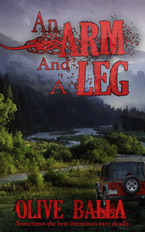

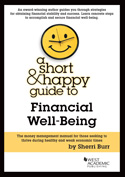

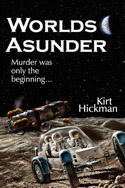
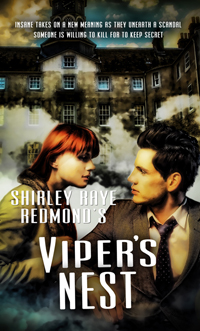


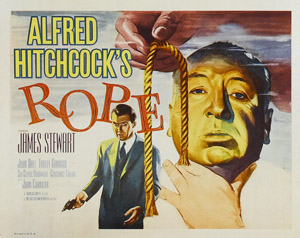
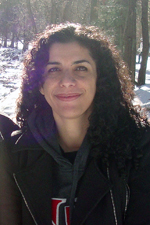 Lorena Hughes was born and raised in Ecuador. At age eighteen, she moved to the US to go to college and earned a degree in Fine Arts and Mass Communication & Journalism. She has worked in advertising, graphic design and illustration, but her biggest passion is storytelling. Her historical novel set in South America, The Black Letter, took first place in the
Lorena Hughes was born and raised in Ecuador. At age eighteen, she moved to the US to go to college and earned a degree in Fine Arts and Mass Communication & Journalism. She has worked in advertising, graphic design and illustration, but her biggest passion is storytelling. Her historical novel set in South America, The Black Letter, took first place in the 